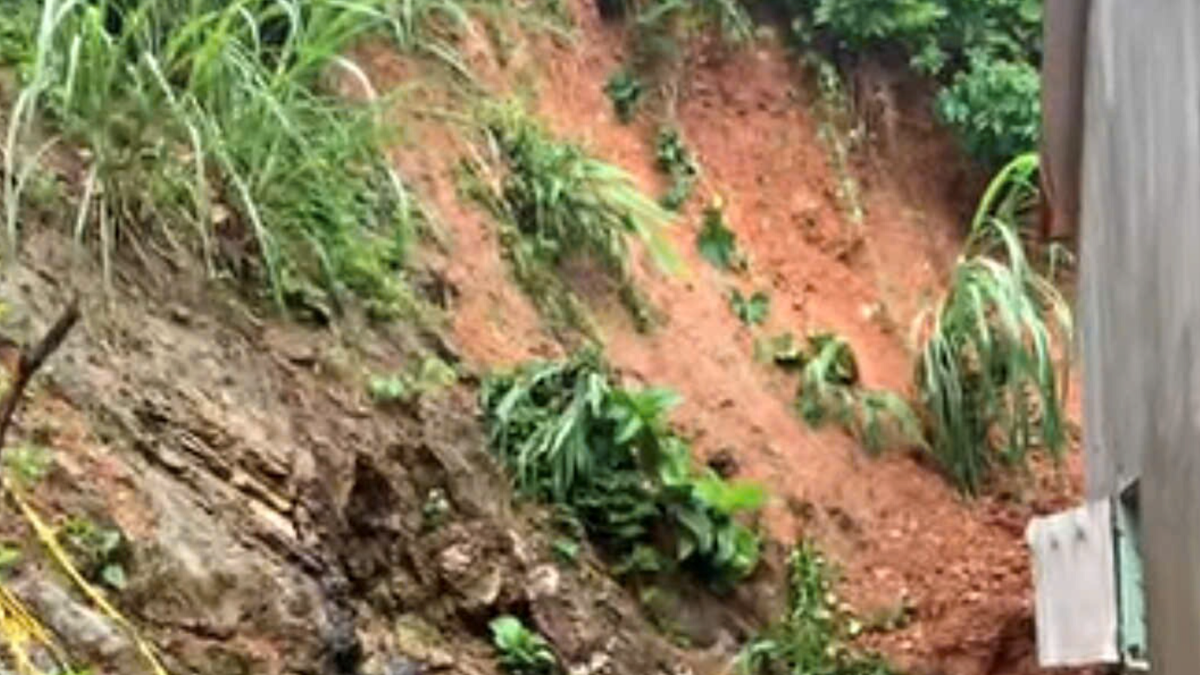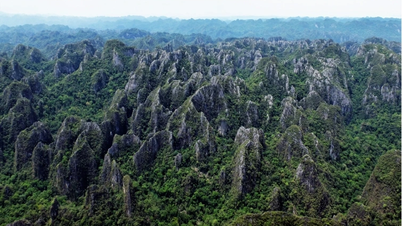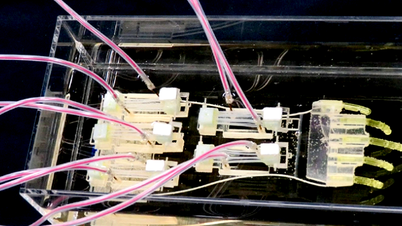
Balloons are released into the sky on the opening day of school. Photo: Thuy Hang
10 students suffered burns mainly on their arms and faces. Of these, three students suffered minor burns and were able to go home after applying medicine. The remaining seven students were bandaged and transferred to Yen Dinh District General Hospital for further treatment.
In fact, it is not only now that there have been burns caused by balloon explosions, but there have been many similar incidents. Specifically, on May 13, 2019, four men used lighters to untangle a bunch of balloons filled with hydrogen gas and had to be hospitalized due to burns to their faces, arms and hands. On September 19, 2019, U14 Song Lam Nghe An players used balloons to block the sun, a man used a lighter, the bunch of balloons exploded and caught fire, burning three players.
On May 24, 2022, a student in Tuyen Quang removed a bunch of decorative balloons, which unfortunately exploded and caught fire, causing the victim to suffer second and third degree burns on his face and arms...
Not only does it affect health, balloons are also harmful to the environment because when they fly high, they explode and the shell falls into the sea. Marine creatures, especially rare sea turtles, eat the balloon shell and cannot digest it, leading to death.
Many people still remember the touching story of the letter sent to the Principal by Nguyen Nguyet Linh, a student preparing to enter grade 6 at Marie Curie Hanoi School in 2019. In the letter, the girl wrote: "When balloons fall to the ground or the sea, sea turtles and other creatures mistake balloons for jellyfish. Ribbons and strings tied to balloons can also cause them to get stuck and die."
The student said that she and many of her friends are very concerned about environmental issues and suggested to the Principal: "Can our school not release balloons on the opening day, or limit the number of balloons?"
In response, Mr. Nguyen Xuan Khang, Principal of Marie Curie School, agreed not to release balloons at the opening ceremony that year. "I hope that our meaningful work will be welcomed by many places," Mr. Nguyen Xuan Khang wrote in a letter to his student.
Soon after, the story spread and inspired the education sector nationwide. The Ministry of Education and Training praised the idea of teachers and students at Marie Curie School and encouraged other schools to do the same. And since 2019, many schools have stopped using balloons for the opening day.
Talking about the danger of balloons, Dr. Tran Van Phuc (Xanh Pon Hospital, Hanoi) said that when exploded, a hydrogen-filled balloon can turn into a fireball that causes burns, not to mention the pressure created from the explosion has great destructive power. In addition to causing burns and soft tissue damage, balloon fragments can even penetrate the throat and cause blindness.
Normally, to fly, balloons are usually filled with hydrogen or helium gas. Hydrogen is a light gas 16 times lighter than air, colorless, odorless, transparent, flammable and explosive even at normal temperature and pressure. Helium is an inert gas 8 times lighter than air, colorless, odorless, non-flammable at normal temperature and pressure.
“Because of its terrible explosive properties, hydrogen is also used to make thermonuclear bombs, which are 1,000 times more powerful than atomic bombs. Therefore, developed countries have banned the use of hydrogen gas in balloons, and are only allowed to use helium gas because this gas does not cause such explosions,” said Dr. Tran Van Phuc.
Dr. Phuc also said that hydrogen balloons often explode when exposed to high temperatures, such as hot sun outdoors, hot light bulbs indoors at high temperatures, or people smoking with flying cigarette butts. Or it could be due to playing with hydrogen balloons, or even adults using balloons to tease children by hitting them on the head or face without knowing that balloons containing hydrogen with a sudden increase in pressure can also cause explosions. In addition, hydrogen balloons encountering objects containing aromatic hydrocarbons such as those found in orange, tangerine, and lemon peels can also cause explosions because aromatic hydrocarbons dissolve very well in rubber, and balloons are made from rubber. "So when orange or lemon juice is shot into a balloon, it will explode, creating an extremely dangerous jet and fire. High school chemistry teachers should include this detail in their lessons," said Dr. Phuc.
Up to now, Vietnam has not yet issued a ban on hydrogen injection into balloons like many countries in the world, while the price of hydrogen is only 1/4 of the price of helium, so some balloon sellers still inject hydrogen into balloons. With the naked eye, there is no way to distinguish hydrogen balloons from helium balloons. Therefore, before the authorities issue a ban on hydrogen-filled balloons and inspect balloon sellers, consumers can only rely on conscientious sellers.
In addition, to have a fun and safe first day of school, the Education sector also needs to issue a ban on hydrogen balloons on the first day of school. Competent authorities also need to have regulations for hydrogen balloons such as prohibiting their use in crowded places, such as on public transport, at crowded parties, with many children, etc.
"Department of Family, Ministry of Culture, Sports and Tourism implemented"
QUYNH HOA
Source





























![[Photo] Signing of cooperation between ministries, branches and localities of Vietnam and Senegal](https://vphoto.vietnam.vn/thumb/1200x675/vietnam/resource/IMAGE/2025/7/24/6147c654b0ae4f2793188e982e272651)









































































Comment (0)